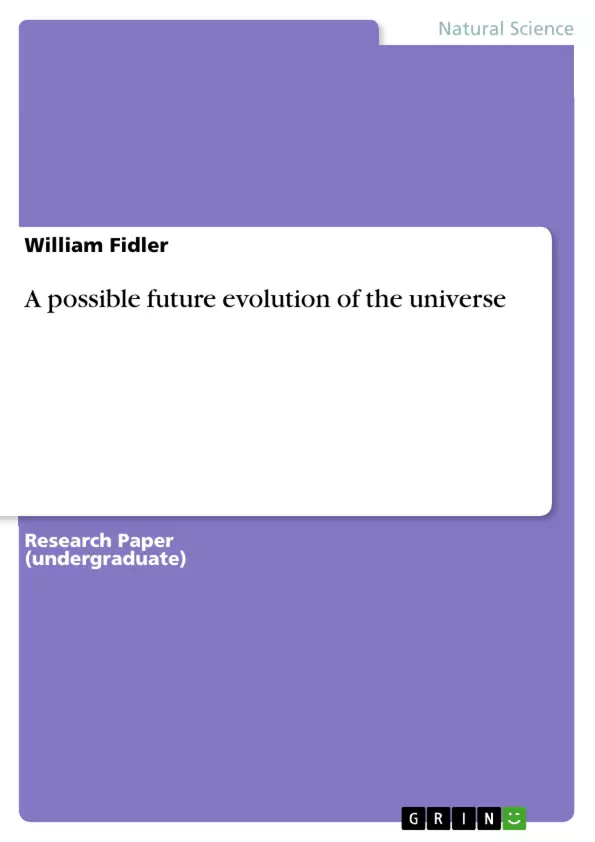The model of the future behaviour of the universe developed here is an extension of that developed in [1] and [2] from the indefinite past until the present time.
The first part of the trajectory of the deceleration parameter of cosmology into the future is obtained by extending the exponential variation with time of the trajectory from the end of the cosmic jerk until the present time, as developed in [1]. It is shown, in the future, when the magnitude of the deceleration parameter becomes, -1, that the universe attains a state where the volumetric strain rate becomes a minimum. It is argued that, for this reason, the universe then remains in this state indefinitely.
The trajectory of the deceleration parameter of the universe from the present time into the indefinite future, as shown in the diagram in the body of the work, is then simply an exponential curve followed by a horizontal straight line.
Inhaltsverzeichnis (Table of Contents)
- Abstract
- Content
- Introduction
- The acceleration of space at the boundary of the universe
- The future trajectory of the deceleration parameter
- The special character of the state of the universe along the line q = -1
- Discussion
- References
Zielsetzung und Themenschwerpunkte (Objectives and Key Themes)
This paper presents an extended model of the future behavior of the universe, building upon previous work. The model focuses on the deceleration parameter and its trajectory over time, specifically examining its behavior after the cosmic jerk and towards the future. The goal is to propose a possible future state of the universe based on established physical laws.
- Future evolution of the universe
- Trajectory of the deceleration parameter
- State of the universe at q = -1
- Acceleration of space at the boundary of the universe
- Expansion of space in a FLRW universe
Zusammenfassung der Kapitel (Chapter Summaries)
- The abstract summarizes the model's extension from previous work and focuses on the trajectory of the deceleration parameter into the future. It highlights the key finding that the universe reaches a stable state at q = -1.
- The introduction discusses the importance of models and predictions in understanding the future state of physical systems, emphasizing that the validity of these predictions can only be confirmed through observation.
- The section on the acceleration of space at the boundary of the universe presents equations relating the acceleration to the deceleration parameter and other variables, such as the frequency of the vacuum and Hubble's parameter. These equations are derived from previous work and are crucial for the model's development.
- The chapter on the future trajectory of the deceleration parameter focuses on the model's predictions about the future state of the universe, including the trajectory of the deceleration parameter and its implications for the expansion of space.
Schlüsselwörter (Keywords)
The key terms and concepts of this paper include: deceleration parameter, future evolution of the universe, cosmic jerk, FLRW universe, q = -1, acceleration of space, boundary of the universe, frequency of the vacuum, Hubble's parameter, cosmic acceleration, expansion of space, model of the universe, physical laws, predictions, observation, initial conditions, state of the universe.
- Arbeit zitieren
- William Fidler (Autor:in), 2018, A possible future evolution of the universe, München, GRIN Verlag, https://www.hausarbeiten.de/document/416774


